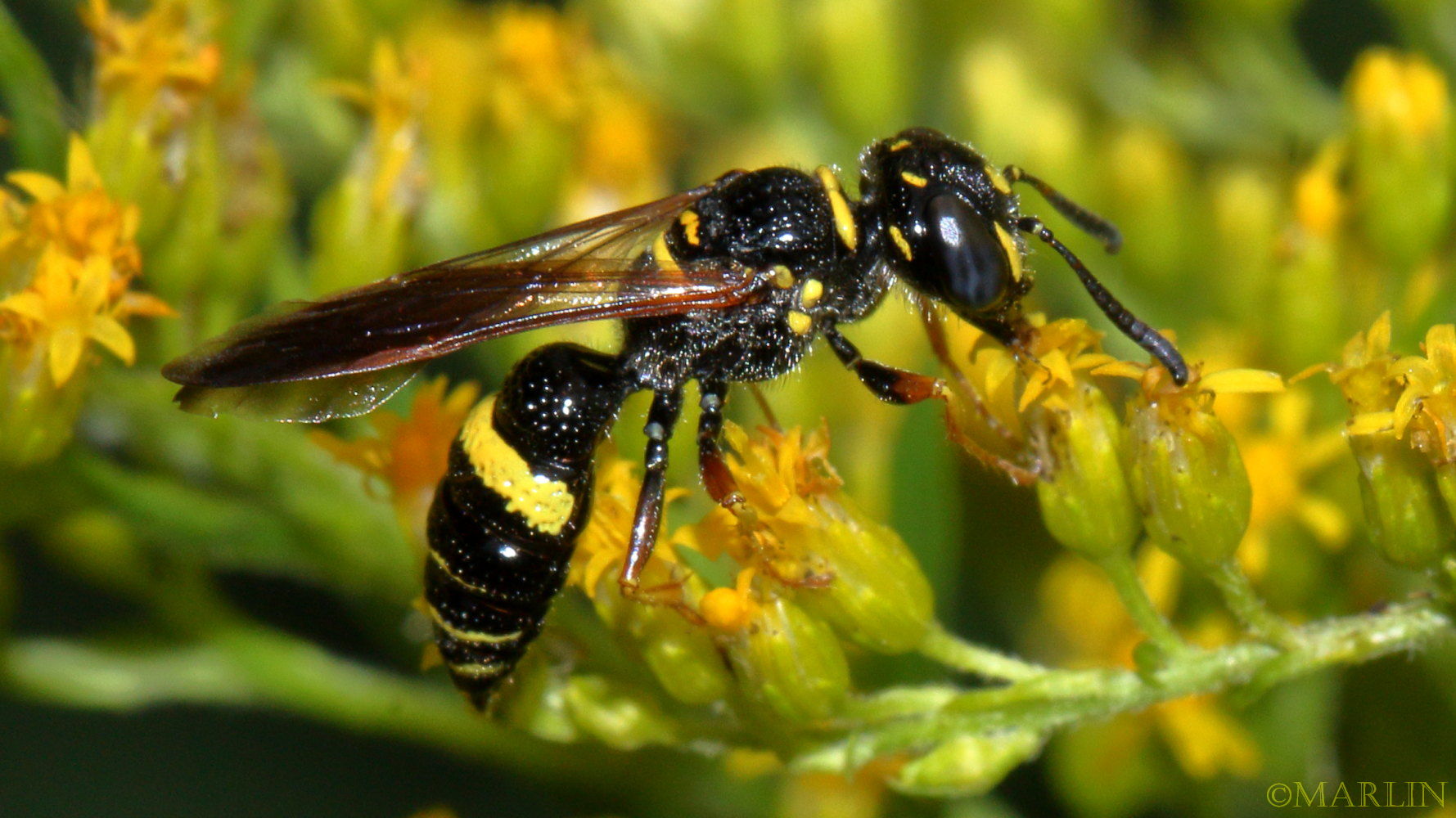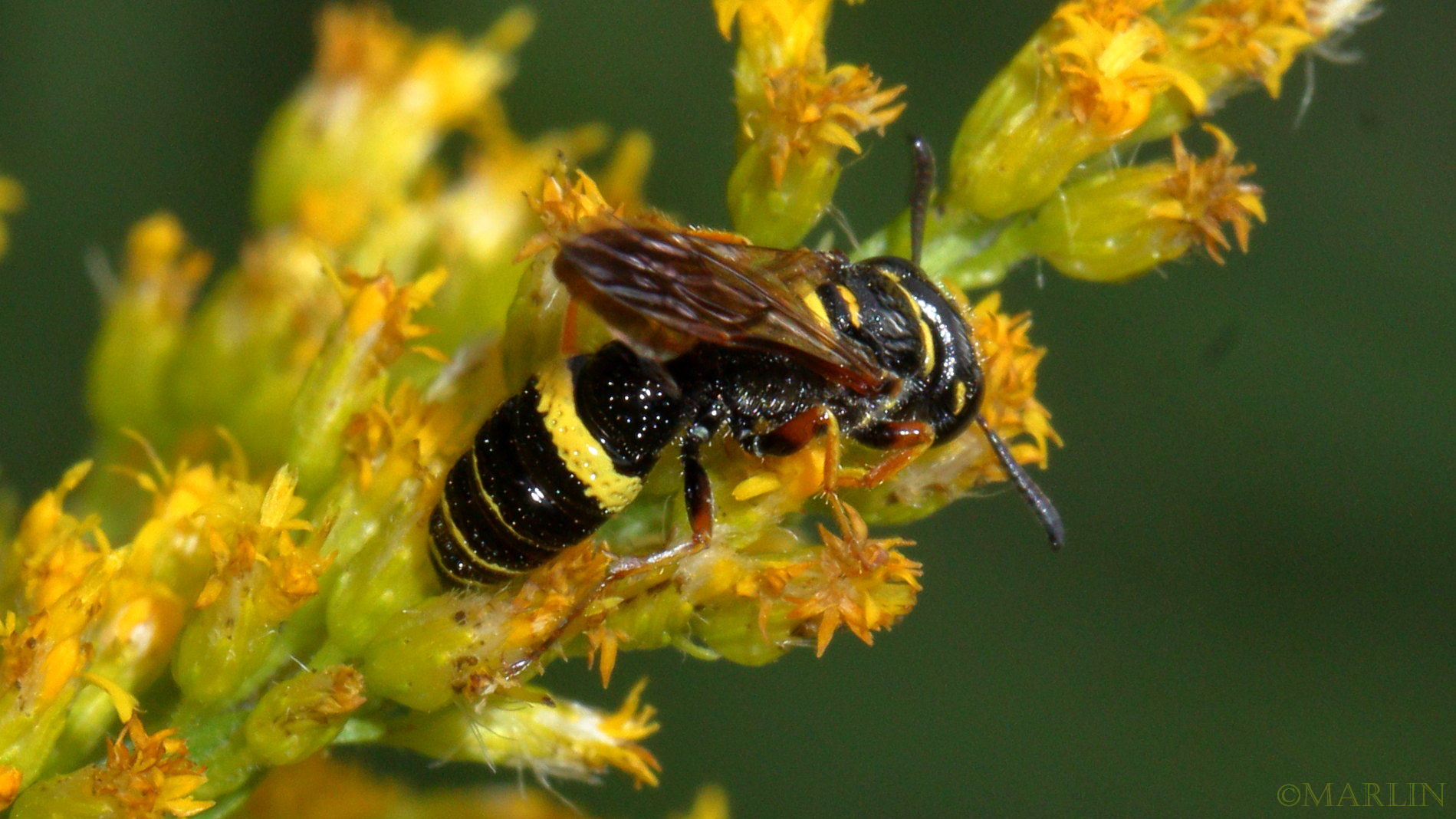Beewolf Wasp – Philanthus gibbosus
“Beewolf” wasps get their name from their habit of provisioning their nests with paralyzed bees as food for their progeny. Adults feed on nectar and pollen.
Beewolves are solitary wasps, which means they do not form colonies like social wasps such as yellow jackets or hornets. Instead, each female beewolf constructs her own nest, usually in sandy or loose soil. She then captures and stings into submission any number of different bee species, including honeybees and Halictid bees, among other species both solitary and colonial.
The paralyzed bee is placed in a chamber underground and a single egg is laid on the still-living foodstore. When the egg hatches, the larvae has a ready source of fresh meant, which it devours before tunneling out of the nest. This method is used by various hymenopterans, e.g., the cicada killer wasps, spider wasps, and mud daubers.
I always confused this species with potter wasps, which also use the same hunting method but use homemade mud pots for their nests.
Reference: Bugguide.net, Beewolf Wasp – Philanthus gibbosus



